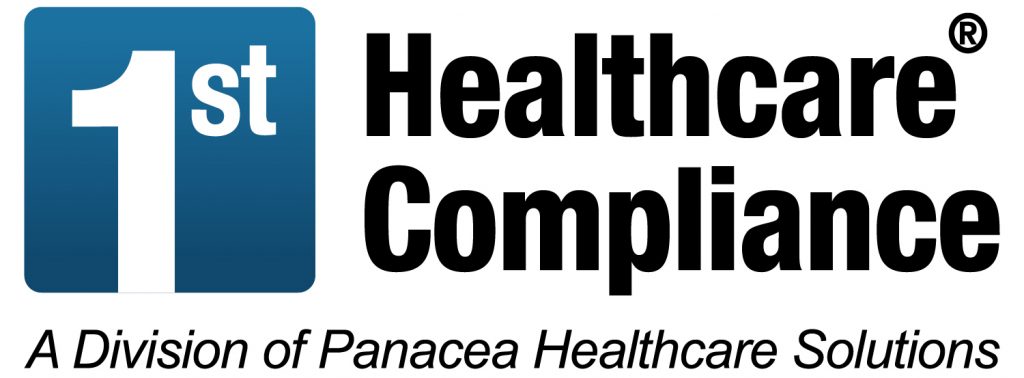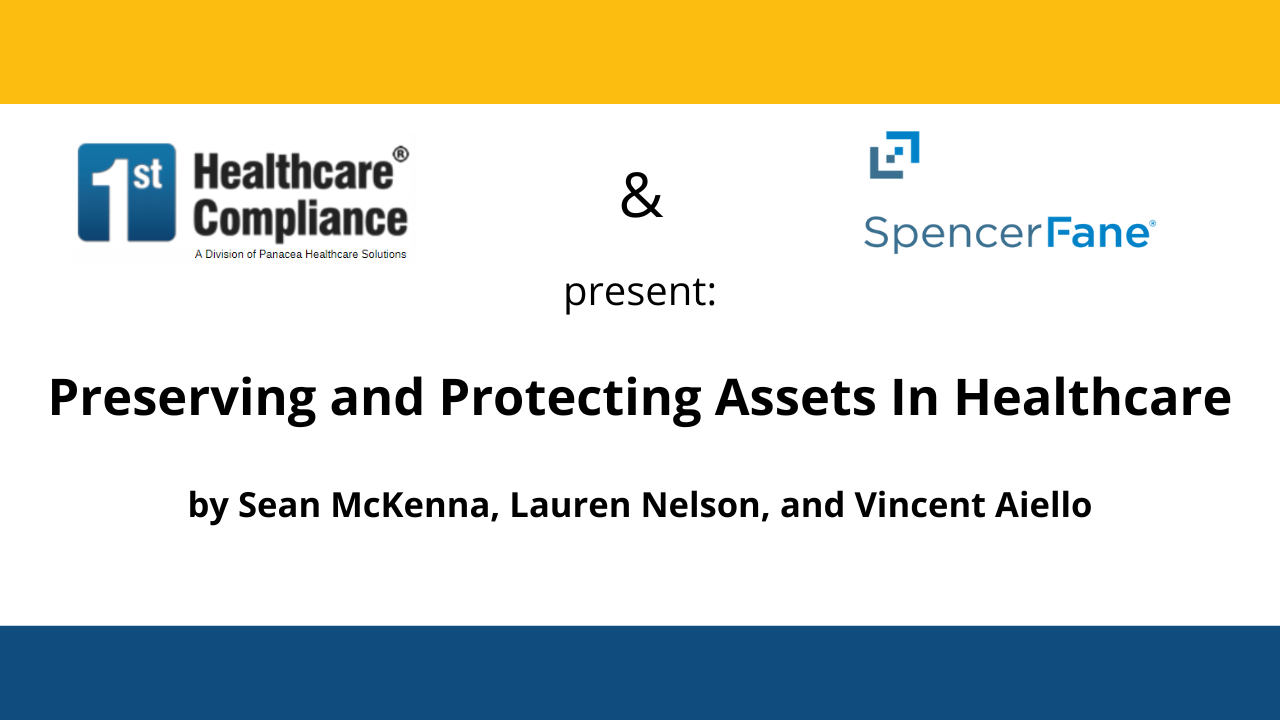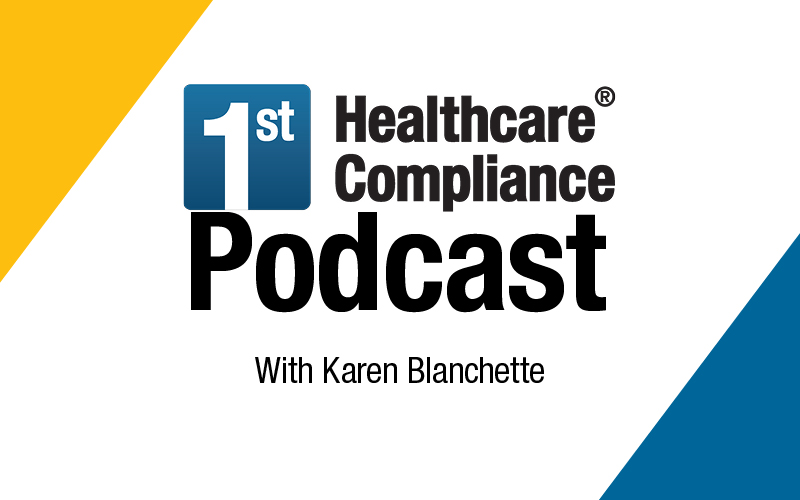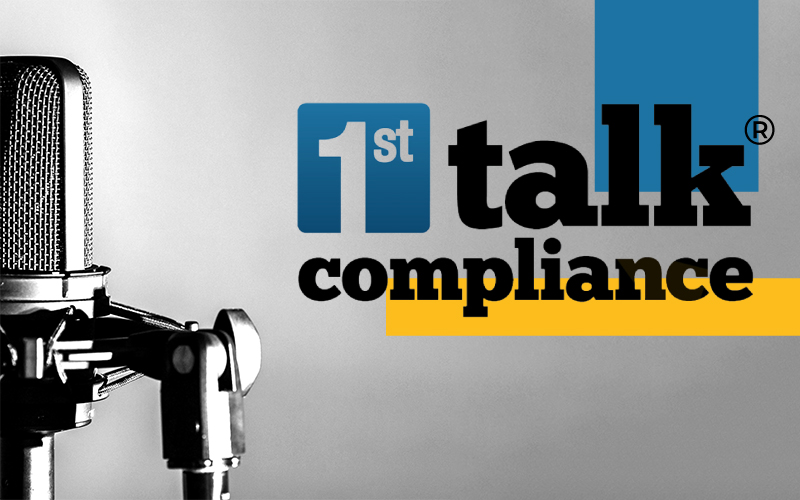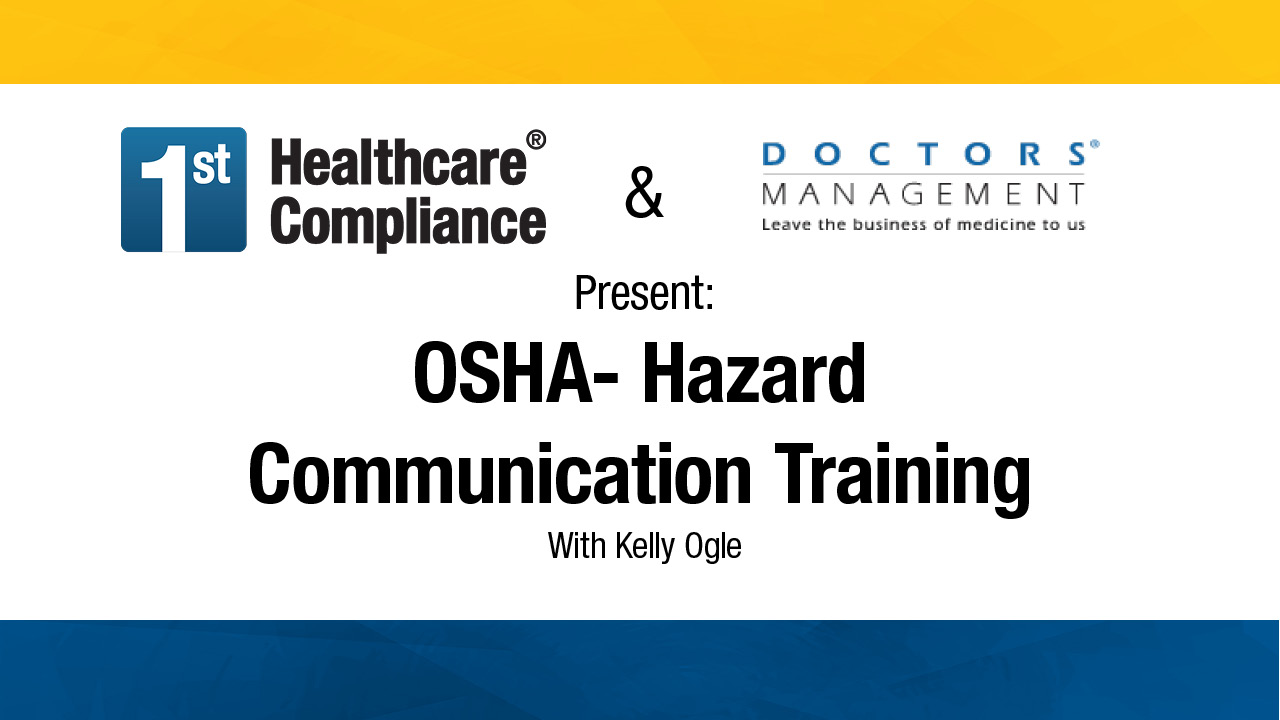How Workplace Communication Mitigates Harassment
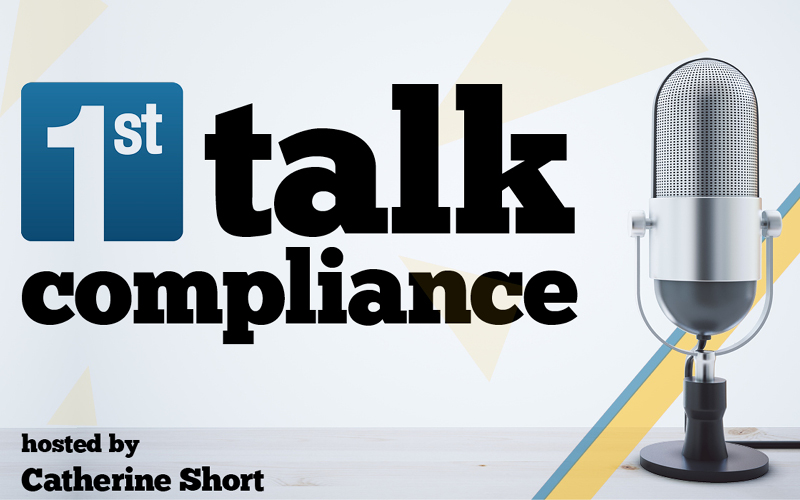
Catherine Short speaks with Warren Cook, President and Co-Founder of SymbianceHR . The topic of today’s program is “How Workplace Communication Mitigates Harassment.” We will explore the various communication strategies and practices necessary to develop a culture that inherently minimizes harassing behavior in the workplace, including various communication techniques and activities that lead to engagement and empowerment while simultaneously creating an inclusive environment that builds trust and respect.
Subscribe: Amazon Music | Email | RSS | More
TRANSCRIPT
SUMMARY KEYWORDS
communication, workplace, employees, people, behaviors, individuals, unconscious bias, problem, supervisor, organization, harassment, impact, compliance, diversity, conflict, trust, respect, engagement, topic, person
SPEAKERS
Catherine Short, Warren Cook
Catherine Short 00:03
Welcome and let’s First Talk Compliance. I’m Catherine Short Partnership Marketing Manager at First Healthcare Compliance. Thanks for tuning in. This show is brought to you by First Healthcare Compliance as part of our commitment to provide high quality complimentary educational resources. We help create confidence among compliance professionals throughout the United States. Please show your support by taking a moment to provide a view on Google, Facebook or iTunes. You can also follow us on Instagram, Twitter, and subscribe to our YouTube channel. Today, we are speaking with Warren Cook, President and Cofounder of SymbianceHR. The topic of today’s program is “How Workplace Communication Mitigates Harassment.” We will explore the various communication strategies and practices necessary to develop a culture that inherently minimizes harassing behavior in the workplace, including various communication techniques and activities that lead to engagement and empowerment, while simultaneously creating an inclusive environment that builds trust and respect. So hello, Warren, thank you so much for joining me today on 1st Talk Compliance. It’s great to have you back.
Warren Cook 01:23
Thank you, Catherine. It’s great to be here with you today.
Catherine Short 01:26
Thank you. Why do you relate communication as a key problem to harassment in the workplace?
Warren Cook 01:35
Well, it’s something over the years that I’ve certainly learned, and it’s evolved. As my career evolved in learning how people in organizations work together, I believe there’s a if there’s a lack of respectful communication, and a lack of appreciation for diversity of thought, and an organization, at least two behaviors that evolve into harassment. Without a development of a respectful communication, intent versus impact can be lost between people, providing others dignity and respect can be absent. And an establishment of trust really becomes non existence in the workplace. When this communication breakdown happens, individuals will allow their own biases to surface and influence how they interpret their environment, and the reasons why things happen, as why things happen around them, so to speak. As a result, they begin to communicate with each other and across the organization in a relatively negative manner, without respect for others, which can often lead to comments or even behaviors that are unacceptable in the workplace. And then over time, these can manifest into a harassing behavior, which really becomes a risk and liability for the business, but also just damages the culture.
Catherine Short 02:51
Yes, I believe I’m familiar with what you’re talking about. But can you give a few examples of what that could include in the workplace?
Warren Cook 02:59
Absolutely, Catherine. So if you think about two individuals that have either a disagreement, or even a situation in which they have a difference of opinion of how to do the work, and if that relationship or the respect between those two individuals isn’t where it needs to be, or isn’t necessarily been effectively executed, those two individuals, when they have that disagreement, may start having some emotion attached to the disagreement, they start becoming angry when they have to talk to that person about the topic or the project or the work tests that they’re doing. Usually, unintentionally, but it happens where humans, then that person begins allowing their unconscious biases and those unconscious biases could be about protected characteristics, the race and gender, the ethnicity or anything else about that individual started rising to the surface. And instead of recognizing that maybe the other person, from their perspective, or the diversity of thought that they’re bringing to the table, have a valid reason why what’s happening is wrong and correct, not efficient or effective performance or work. They blame the other person for bringing this topic or issue up on that other issue.
So let’s say it’s gender, someone could feel that, oh, they’re picking on me because I’m a man or because I’m a woman, not simply because the work product or performance isn’t good. So if communication loses respect, that communication isn’t respecting other people’s perspectives, and you can’t stay focused on the work and you start bringing in emotions and you start bringing in these biases. instead of actually addressing the problem, or coming to some mutual agreement on how to approach a solution. You end up with animosity, which then turns into every engagement of communication with that person becomes more and more challenging, more and more difficult, eventually, maybe disrespectful. And then it might start violating company policies about how to behave or interact in the workplace and Ultimately, those unconscious biases, which are potentially based on a protected characteristic rise to workplace harassment, potentially. So I think these things can just be evolved. And it’s like I mentioned early on, it’s not always with intent. But if you don’t learn how to respect each other and have that communication, discussion about the communication, whatever issue you are discussing becomes irrelevant, and everything breaks down.
Catherine Short 05:28
Can you touch on the topic particularly of inclusion? I thought it had to do with diversity. But can you clarify the difference and the similarity between diversity and inclusion? What do you mean between the differences?
Warren Cook 05:41
in the scope of this discussion, inclusion is often aligned with diversity. And it’s well recognized in recent years as a two-part process of establishing a more effective workplace, especially communication, performance, productivity. So it’s true. However, in the context of communication and harassment prevention, I believe that the improvement of communication in the workplace needs to include respect, dignity, and diversity of thought requires people to be inclusive of other people’s ideas and contributions. So rather than the concept of diversity relating to protected characteristics, or the differences in people, I want to make sure that translation this context, into different set of ideas and the contributions people can bring to the table and including those ideas and concepts. And to clarify this, in the context, is the inclusion has really nothing to do with the protected characteristics such as gender, race, national origin, sexual orientation, all that. Instead, in this context, the inclusion is based on encouraging communication and engagement across functional areas and accompany across departments, units, teams, all to raise the level of engagement across the entire workforce. training on this type of inclusion really leads to civil and equitable treatment of all your employees both outside the scope of diversity alone, still addresses the ability to mitigate risk and liability that is the result of poor communication, poor engagement, that rises to potentially harassment in the workplace. And a great example of this.
And thinking about just if you had a project, where a certain an engineering team, an accounting finance team, an HR team, an operational team are working on some problem, you know, one simple way to view it as how do you make that an inclusive initiative to solve the problem, because really, that’s why everybody’s there to solve problems and produce the products and services of the business. Perhaps you identify stakeholders that historically you didn’t, maybe the operations team should have a representative from finance there, maybe they should bring in an engineer, maybe they should bring in someone from an HR group or somewhere else that simply might not have the technical proficiency in operations, but certainly are stakeholders or are involved in impacting or their their dependency on the process, and bringing them in for their ideas is an inclusive approach. And if you can master doing that, across the organization with all the various projects you have involved, not only are you being inclusive, but people feel more valued, they feel more engaged. And that breaks down these little problems that might arise that are unintentional. So if you have 90% of your interactions are extremely positive and inclusive, when you have those and you will have those one-off, unintentional hurt feelings, or disrespectful situations, you can navigate through them because you revert back to your culture of inclusion, and that there was no ill intent, and let’s find a mutual goal going forward. So there’s definitely a difference there in the traditional thinking of diversity, but in this context, I really think inclusion touches the communication, which then mitigates the risk.
Catherine Short 09:05
Talking about communication, we know that communication is so important. How specifically could a healthcare facility or a business of any kind start to improve trust in the workplace?
Warren Cook 09:20
That’s a great question. And I think it’s probably one of the pillars in my thoughts on this topic around communication and improving a workplace and mitigating this risk is trust. My advice to anybody who listened to the show and for their organizations of any type that specifically your audience, is start where you can apply some minor adjustments to have critical impact immediately. And with that, I’m not just throwing out a high lofty comment and with nothing behind it, it’s really about train your supervisors and train your people leaders on how to effectively engage their staff members during one on one meeting. Right. This is a great starting point to adjust, tweak or begin that behavioral shift for your culture. And these supervisors during this one on one meeting to ask their employees, what else could I be doing as your supervisors to help you be more successful in your role? Think about that. How often are managers and supervisors doing that, especially supervisors who are newer, or maybe have not had this type of mentor and a training, or never have encouraged their employees to manage? The question really requires the supervisor to listen to their response to be genuine, right? Catherine, they got to be genuine and authentic in their desire to help the employees, and they have to be willing to make changes and how they work to achieve success both for the employee and themselves.
So this training really positions the supervisor, well, if they do this effectively with their employee, the engagement with the employee will immediately improve, it starts to build the trust that an employee can look at their supervisor and be willing to speak with them about anything, because they will, they will believe and know that the supervisor has their best interest at heart. And beyond building that trust, performance. And productivity usually increases as well as employee morale, because that employee sees they have an avenue and a channel to go to to get help, to share problems to share challenges. And that’s the supervisors not going to just condone them and punish them for the behavior, but help them be successful. This approach can really produce a quick win, win when applying other strategies and practices to improve communication workflow in place, you know, it will ultimately reduce your risk and liability related to harassment, especially any kind of quid pro quo harassment, because you’re in a situation where if you’re building that relationship with your supervisor or manager, it should never get to the stage of this for that type of encounter of a sexual harassment type environment, or other types of harassing behaviors, because that trust and relationship is going to be a flag early on if there’s a problem. So I really think if there’s an immediate something that that people can get off this radio show, go back in the office and have something that they could do today, it would be train their supervisors and people leaders on this strategy.
Catherine Short 12:24
So we have a particular challenge right now, of course, we’ve been dealing with COVID-19, how can we accomplish improved communication while dealing with this COVID-19 and these challenges in an organization?
Warren Cook 12:39
Sure, and you know, absolutely this, this is something that I thought a lot about in this topic, and a lot of the clients we’re working with today, certainly this is on top of mine. COVID-19 impacted all of us in so many different ways. But more specifically, it’s impacted the workforce dramatically, in some cases, changing just how we perform our work, and how we are engaging the workforce and our employees. So for good or bad. There’s, there’s now a reality of a remote virtual work situation that exists, right. And it’s demanding greater ability for our people, leaders and our employees to effectively communicate with their peers with their staff with the management and leadership team. If there were obstacles impeding effective communication, prior to COVID-19 impact on your workforce and organization, this must become a high priority of correcting this communication problem, because as an organization, you’ll have an even greater uphill battle to overcome not only the cultural shift, but also training and development of effective communicators across the workforce. So by that if, if you didn’t have good communication, previously, and now you’re in a virtual world, now you’re on video conferencing, now you’re on one on one zoom calls, maybe you’re having your weekly one on one, not in person, but on the phone, and you weren’t very good at communicating before, or you have managers and people leaders at work. It’s only going to exacerbate the problem. transparency, building trust, and being available to your employees is going to be critical success factors to not only enhance engagement, but to mitigate the risks that are going to impede that progress. And, you know, more specifically, I’ve had a lot of clients recently, Catherine say to me, I have poor performers. Now I didn’t know they were poor performers in the past. And I ask them, is this a reflection on the employee or on your people leaders? You know, if you if you have a poor performer and a supervisor is doing a terrible job of managing their performance and helping to be successful, it’s only going to make the problem worse when they don’t have the one on one attention and they’re not there in person.
At the same time, it may reveal that person needs more support and feedback or you’ve got to highlight your strong performers are and you’ve got to find ways to leverage these technologies to continue the communication, remember to people now have the ability with it all being video and all other types of technologies. They could be recording things. They could be videoing things they could be, you know, saving and sharing information. And this increases, in some ways the risk to an employer of making sure everybody’s communicating appropriately. I just recently had a communication where I was talking about hiring in the workplace and retraining your people, leaders and interview team on how to communicate properly during an interview, because now it’s a video interview, right? So COVID had created a lot of challenges we would have never anticipated. On the flip side, we also are learning that a lot of organizations have found ways to do things more effectively and more efficiently. And I encourage the audience of this radio show, and others who may read this to see this later, is that your employees are going to come up with great solutions and ideas for your products or your services for your communication, even workflow and technology recommendations. Make sure that you understand that part of communication is listening. If you’re not asking your employees for feedback, and if you’re not asking them for their ideas and suggestions, you’re missing out on a great opportunity to make them feel valued and cared for, as part of the solution for the business. So I think it’s a shame world only through this while we’re dealing with it. Let’s make sure we recognize where our gaps are and take proactive and strategic approach to fix these challenges so that we help everybody.
Catherine Short 16:34
Right? No, I think there’s definitely pros and cons about the new workforce and way being so those are all very good tips. If you’re just tuning in here listening to 1st Talk Compliance brought to you by First Healthcare Compliance as part of our commitment to provide high quality, complimentary educational resources, we help create confidence among compliance professionals throughout the United States. My guest today is Warren Cook, President and Cofounder of SymbianceHR. The topic is “How Workplace Communication Mitigates Harassment.” Please show your support by taking a few minutes to provide a review of First Healthcare Compliance on Google or Facebook. You can also follow us on Instagram, Twitter, and subscribe to our YouTube channel. So, why don’t you discuss triggers as a catalyst for harassment in the workplace? Can you elaborate on this and provide an example?
Warren Cook 17:30
I’ll use as an example, and in the context of our topic today, accountability, or more specifically, just a lack of their own, and how that can trigger problems that lead to harassment. When employees and managers alike are not held to a common standard, in accordance with the vision, the mission and the goals of the organization, as well as the culture that’s being promulgated, accountability will simply be inconsistent or non-existent, which is worse. When this is permeating throughout the workforce, individual employees may look for other reasons, right, other reasons why people are not treated fairly, or more critically fabricate in their own mind why they are being treated differently. The root cause may include a lack of training, it could be poor modeling of the expected inappropriate behaviors in the workplace, etc. But however, at the end of the day, Catherine, when someone believes they’re not being treated fairly due to lack of or perceived targeted accountability, they ultimately begin to think of the why is that happening? In many cases, this thinking leads to labeling, right? They label or create this, ultimately a discriminatory thinking.
So in other words, all this really summarized to me that the employee believes whatever is happening to them, is happening because of a protected characteristic. And this leads to then adversarial behaviors, and the organization really needs to try to avoid and mitigate this. And to put this in really practical layman’s speak. If the employee sees that another person in their team, for example, is making mistakes, doing things wrong, or failed to follow some policy or rule or even just a step at a process, and they never get in trouble in their mind, right, their view is Oh, Jane or John Doe never get in trouble for that. And then suddenly, they’re called into their boss’s office and ridiculed or get a poor performance review or get criticism or some kind of corrective action for that same failure or task or activity that they didn’t follow or do right. Without knowing the reasoning behind it without being able to understand what’s going on from the perspective of the other situation. All they know is what they see and observe. And at first we’ll just say, oh, that person has been held accountable. And then they’ll say, well, they’re not being held accountable because of x. Maybe they’re not being held accountable because of their age because of their gender, because another race because of whatever. And those ideas and thoughts keep festering and festering in their head until they start them using that in their communication. And using that and how they interact with that supervisor or others. If businesses don’t do a good job of consistently holding people in this example, accountable for their work performance and behaviors, that’s one area that can certainly trigger or be a catalyst for harassment in the workplace. And, again, effective communication, speaking to each other, making sure there’s bilateral communication up and downward communication, and transparency and trust, you can mitigate those things. Otherwise, what I just described happens every day in work workplaces across the country, to the detriment of the people involved, and to the detriment of the culture and the business themselves.
Catherine Short 20:50
You mentioned bias. I know that sometimes people have unconscious bias when presenting this topic. What can people do to avoid allowing this behavior to impact their communication with others?
Warren Cook 21:04
No, that’s a great question, Catherine. And that’s something that I deliver a lot of training on this because it’s a, it’s something that impacts all of us. So as the name or description implies, the bias is viewed as unconscious, because the individual that’s presenting or sharing that perspective, review isn’t willfully or with any kind of negative intent, applying the bias, the bias to how they communicate, or interact with others, whether it’s verbal communication, it could be written or nonverbal mannerisms, but whatever it is, they might not be doing it intentionally. So unconscious bias is something we all have from the life we’ve lived, and all the external influences that have been imparted on us throughout our lives. These influences can be anything really, it can be anything from your family members, your social interaction, your economic situation, your geographical situation, where you live, how you grew up, the people you encountered, the jobs, you’ve had, everything. And so these biases are often the most challenging to overcome, because they contributed to who we actually are as an individual, right? It’s who we who we are today and a combination of our life. And so regardless of that, when communication breaks down, or pattern of challenging communication follows us in our career, or our life, where you get similar feedback over and over, or you’re pulled over and over that you behave this way, it does warrant for us to take a closer internal reflection, and analysis of our behaviors and our communication.
And once you as an individual, become aware of the bias, you can really make a conscious effort to mitigate and address the influence that when communicating with others, so if you find that you have a tendency to speak one way around men and other way around women are one way around younger individuals that other way around older individuals or, you know, whatever that tendency is, that’s not intentional, but could negatively impact the engagement or the communication with the other person. You want to really just make yourself aware because it’s simply that reminding yourself of the awareness helps you stop that helps you refocus on just being very objective with the topic. So again, rarely Is there any negative intent, when it’s unconscious bias rears itself, however, the impact can be extremely negative, and requires a keen sense of emotional intelligence and, and insight to pick up on the reactions of others. I’ll give you a great example of this. Over the years of interviewing 1000s of candidates, when I’m working with an interview panel or hiring team, it often becomes very clear to me quickly if someone on the panel is demonstrating some unconscious bias because when they present their reasons for or against an applicant or a candidate, they often don’t match their decision. They often don’t match their behaviors during the interview or the follow up questions they might ask. And so I’ll explore that only to find out that, oh my gosh, they didn’t realize they were doing this, they didn’t realize that they were having that perspective, or consistently taking one side over the other. That wasn’t objective simply because that’s how they viewed it. And it really was being closed minded to that diversity of thought and inclusiveness. So there’s lots of situations real life situations that can impact and hurt your performance that can impact the hurt your business or your organization, if you’re not willing to reflect on it, and this takes a humility to ask your peers and ask your managers employees if they feel you demonstrate any unconscious bias because once you become aware of it, you can improve it and enhance it, but if you, if you’re unable to even identify or become aware of it, it will forever be a problem until you recognize it’s there.
Catherine Short 25:07
Included in feedback, sometimes there might be conflict. So why, in your opinion, is it that conflict is not a negative thing in the workplace?
Warren Cook 25:17
Oh, great, great question. And I just had a conversation about conflict with the candidate earlier this morning. I’m a huge proponent of positive constructive conflict to resolve differences and arrive at the most effective solution for everyone. You know, historically, there was a Human Resources focus on conflict resolution, which is designed to really just resolve conflict, right, and, and there still is a place with certain topics like sexual harassment or violence in the workplace where you are resolving conflict. But in recent years, the best practice demands that we also recognize conflict, and master conflict management. What I mean by this, is we engage in conflict with mutual goal with respect, and with inclusion in mind to achieve the greatest solution for everyone, right?
So as an example, if you had a roomful of design engineers for a project, would you want them as a leader to stop interacting once they had a disagreement on the design or the path forward and resolve the conflict? Just resolve it and walk away? Or would you rather than engage one another, however, with respect with dignity, professionally, so that they could hear each other’s ideas, collaborate on the topic, and then arrive at the best solution for all perhaps willing to try each other’s ideas and suggestions even until one of the solutions or one of the choices become the best design for them and for the business? Right? So, you know, I hope, I would hope the goal of any leadership team would be to encourage that trust, encourage that respect, and inclusion and collaboration. And it only happens and it only works when it’s modeled when they’re trained on it, when they’re empowered to do it. And they all understand how to do it respectfully, professionally, with dignity to those around them. And it requires listening as well. But that’s a great example, hopefully, for the duty audience. So why it’s not about just resolving conflicts. It’s about managing through it and helping everybody get to the same mutual goal.
Catherine Short 27:25
Wonderful. Well, thank you so much, Warren, I really appreciate you being here today. As always, you’re such a pleasure to have on our show. So thank you.
Warren Cook 27:33
My pleasure. Thank you so much.
Catherine Short 27:36
Thank you, and thanks to our audience for tuning in as always, to 1st Talk Compliance. We appreciate you as well. You can learn more about the show on the program’s page on healthcarenowradio.com and lend your voice to the conversation on Twitter at @1sthcc or #firsttalkcompliance. You can also email me at catherineshort@1sthcc.com. I’m Catherine Short of First Healthcare Compliance. Remember, compliance is the key to achieving peace of mind.
